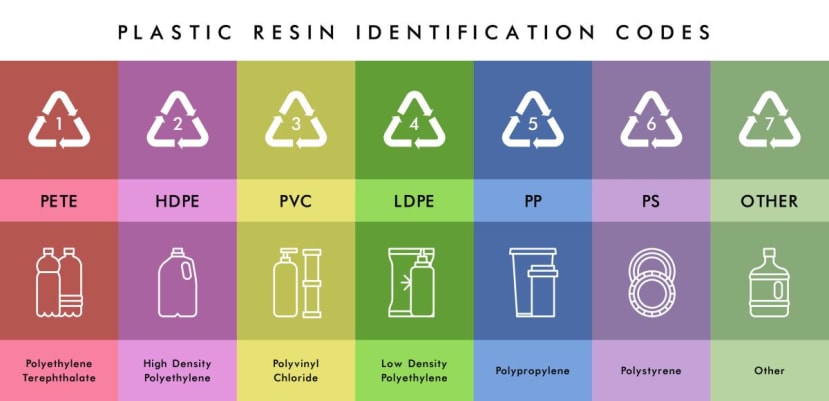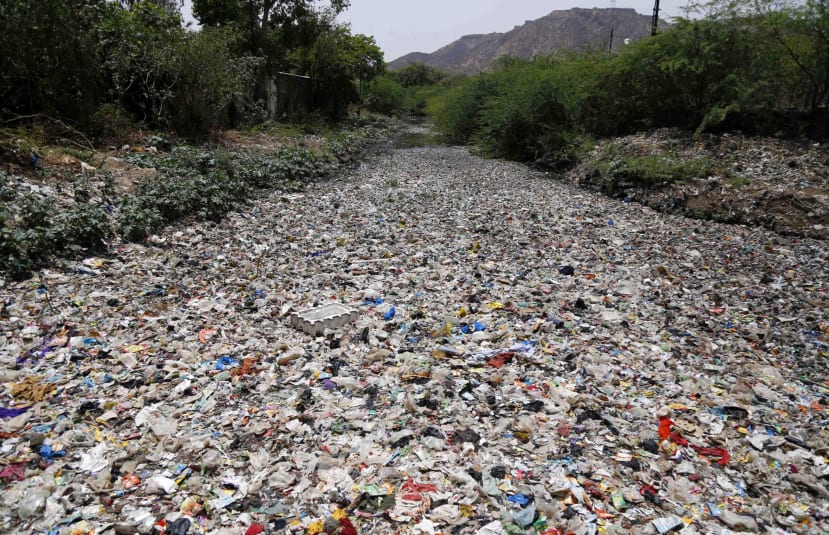Recycling The Unrecyclable
Follow articleHow do you feel about this article? Help us to provide better content for you.
Thank you! Your feedback has been received.
There was a problem submitting your feedback, please try again later.
What do you think of this article?
There can’t be many people alive, in any developed country, who don’t believe recycling is a good practice. We all try to do ‘our bit’, separating out our plastic recycling items for that green or blue bin, with visions of these items finding a new lease of life after being transformed into something else. The problem is, for the most part, this is a comforting delusion.
There are many reasons for the current state of affairs, particularly with regard to plastics, and in this article, we will attempt to separate out recycling hopium from the reality of plastic pollution. We will also look at how technology is being employed to begin to deal with the problem.
Take a look on the bottom of any plastic container and you will find a number inside (what looks to be) the 'recycling' arrows symbol. This is the Resin Identification Code (RIC) number - a system that was created by the plastics industry in 1988 to differentiate 7 categories of plastics.
What most people don't realise, however, is that Resin Identification Codes are not 'recycle codes'. The standard itself states:
"The use of a Resin Identification Code on a manufactured plastic article does not imply that the article is recycled or that there are systems in place to effectively process the article for reclamation or re-use."
The reality is that ‘No. 1’ and ‘No. 2’ bottles and jugs are the only plastics that can be processed through traditional mechanical recycling, which is the process of grinding down materials into recyclable bits. Everything else requires more costly and sophisticated treatments to break polymers at the molecular level, which is often expensive, energy-intensive and can result in toxic emissions.
What doesn’t help is that most plastics in use today are virgin (aka primary plastics), made directly from crude oil or gas because this is still the most economically viable production method. Worldwide production of plastics from recycled (or secondary) plastics increased from 6.8 million tonnes in 2000 to 29.1 million tonnes in 2019, but still only accounts for 6% of total plastics production.
To put the problem into some kind of perspective, as of 2017, it was estimated that 8.3 billion metric tons of virgin plastics had been produced in total. Of that, around 9% had been recycled and 12% was incinerated. Where's the other 79%? In landfill or the rest natural environment, including in the earth, the air and deep ocean trenches - which means it is in the food chain and therefore our bodies, our blood and organs and can even be found in human placentas.
River in India full of plastic waste
The durability we prize to make corrosion and rot-proof pipes, cabling and myriad other items stems from the fact that none of the commonly used plastics are biodegradable. This also means that when we're done with them, they simply accumulate rather than decompose.
Technology to the Rescue
The most widespread current recycling method is mechanical, where plastic is sorted, cleaned, shredded, melted and then remoulded. Unfortunately, this is a downward spiral to unusability and is only suitable for a limited number of plastics. Each time plastic is recycled, the resulting quality is degraded as the melting partially breaks down the polymer chains, decreasing their tensile strength and viscosity, making them progressively less useful.
It’s not all doom and gloom, however. There are chemical recycling methods that are starting to gain traction in the monumental undertaking of fending off ecological disaster.
One versatile method is feedstock recycling, which is any thermal process that converts polymers into simpler molecules that can then be used for petrochemical processes. The two main processes employed are pyrolysis and gasification.
Pyrolysis - Sometimes called thermal cracking; plastic waste is fed into a pyrolysis reactor where it is heated to extreme temperatures in the absence of oxygen, breaking down the polymers into a range of basic hydrocarbons. This pyrolytic oil can be processed in much the same way as crude oil, using conventional refining technologies to produce building blocks for polymers or fuels like petrol, diesel or liquid petroleum gas. Plastics produced from this process are virgin-quality polymers and can be used in all applications, even food packaging. There are many companies actively pursuing this technology.
Gasification - Waste materials are also heated to a very high temperature (1000 to 1500 °C) but in the presence of a limited amount of oxygen, breaking the molecules down to their simplest components, producing syngas (a mix of hydrogen, carbon monoxide and some carbon dioxide). Syngas can be used to produce chemicals like methanol, ammonia, hydrocarbons and acetic acid for plastics production or fuel and fertiliser. Many large-scale processing companies are using this method.
In the UK, Mura Technology is pioneering an advanced feedstock recycling process known as Hydrothermal Plastic Recycling Solution or HydroPRS™. Mura's technique uses water, which is pressurized and heated to extreme temperatures so that it becomes "supercritical" (not solid, liquid or gas) inside the reactor chamber, spreading heat evenly throughout. Using supercritical water bypasses the need to heat the chambers from the outside, making the technique inherently scalable as all the material in the chamber (regardless of size) receives the correct amount of heat. This process also allows for the production of virgin quality polymers.
Mura's Teesside plant aims to process 80,000 tonnes of previously unrecyclable plastic waste every year. The plan is to go global with this and they already have a partnership with Dow Chemical and a licencing agreement with Mitsubishi Chemical in Japan.
Final Thoughts
The ease and low cost of manufacturing plastics, combined with many years of a ‘throw away’ culture has left us with some serious pollution challenges. While we still need a culture shift away from single-use products, there are technological lights at the end of the tunnel for dealing with some of the mess we have already made.



